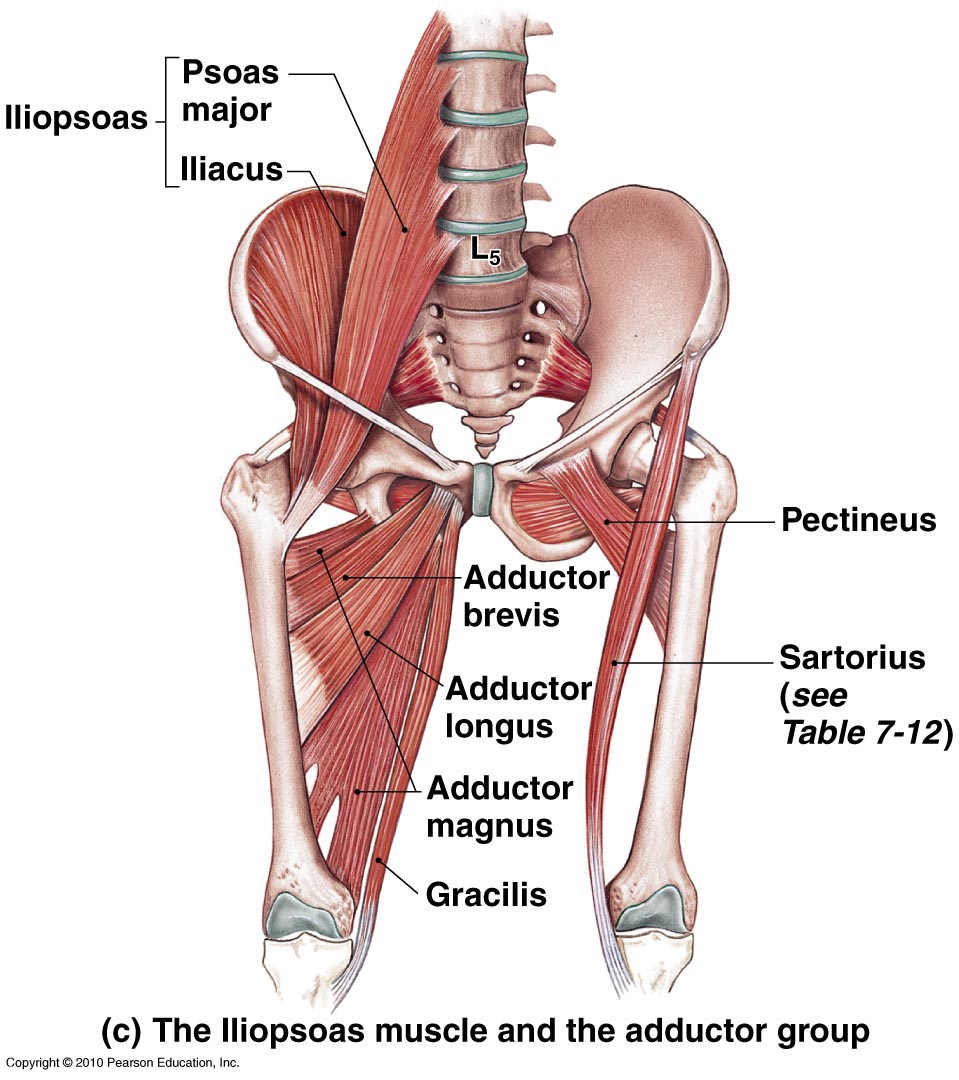The Iliopsoas muscle group comprises of 3 muscles, Iliacus, Psoas Major and Psoas Minor. As you can see from the diagram they have very different attachments at their origins however both Psoas and Iliacus pass from the posterior of the pelvis and lower back region towards the front of the pelvis crossing anteriorly over the hip joint to their attachments at the femur. Together these muscles are strong flexors of the hip (also producing external rotation) and some rotation of the lower spine. They also play a role in stabilising the pelvis during lifting.
Injury to the Iliopsoas groups can cause pains across the lower back occasionally radiating around the crest of the pelvis. Referred pain may also be felt down the front of the thigh. Unilateral spasm of these muscles can cause a pelvic shift sideways giving the back an unnatural posture as Psoas Major and Minor pull against the T12 to L5 vertebral bodies. This is often caused by a lifting injury with rotation and will also involve other muscles of the spine.
The tendons of the Iliopsoas pass across the front of the hip joint. Overuse can cause a tendonitis which is also known as Iliopsoas Syndrome. This can occur in track athletes, dancers and high jumpers as the tendon is overstrained with hip extension.
Signs and Symptoms
Palpation of the lumbar spine by your physiotherapist will be painful at the lumbar attachments. The physio may also passively stretch the muscle groups by lifting a bent leg while the injured party is lying face down. This stretch may bring about pain either in the groin, lumbar spine or both.
Resisted hip flexion will be uncomfortable and there may be pain climbing a slope or stairs and it will also feel difficult to take a long stride.
Differential Diagnosis
As with all things medical a proper diagnosis is essential for any treatment to be successful. There is a very long list of possibilities for groin pain ranging from osteoarthritis of the hip through to hernias, femoral nerve impingent, fractures … so an X Ray may be required and possibly an MRI of the lumbar spine to rule out discal damage.
Treatment
Once the diagnosis has been made, the physiotherapist will use a 2 pronged approach to treatment. Firstly to address any low back symptoms and then to stretch the tendons at the hip joint.
In some cases there may not be pain in both areas, although I prefer to address both as the patient may not realize they have 2 affected areas until they are tested.
Low back pain and any muscle spasm may be treated with heat, TNS, ultrasound, massage and vertebral mobilisations (as appropriate depending on existing muscle spasm, your physio may choose to move on to this treatment at a later appointment)
Any signs of tendonitis will also include passive stretching and possibly accessory movements to the hip joint, particularly if the problem has been over a prolonged period of time and caused a reduced range of movement at the hip joint.
Stretching Techniques
Your physio will likely include passive stretching during the treatment, and home stretching within pain ranges should be continued by the patient every day.















0 Comments